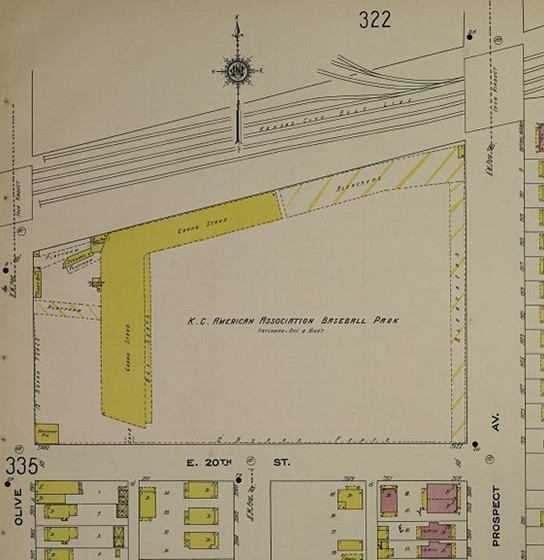Blues Park (Association Park II)
Introduction
Text-to-speech Audio
The second version of Association Park was home to the minor league Kansas City Blues of the American Association from 1902 to 1922. The park was also home to the major league Kansas City Monarchs of the Negro National League from 1920 to 1922. A semi-pro multi-racial team called the All Nations played here in 1916 and 1917. Street boundaries were Prospect Avenue (east, left field); East 20th Street (south, right field); Olive Street (west, first base); and railroad tracks (north, third base). Today it is known as Blues Park, a playground with an historical marker honoring the original ballfield.
Images

Backstory and Context
Text-to-speech Audio
The American Association Park was owned by George Tebeau who restricted Black patrons in attendance to the top 14 rows of seats, even when Black teams were using the field. There was a 30-foot high screen in right field. The park was a single-decked wooden structure. The capacity is unknown. Tebeau and George Muehlebach, a brew master who owned the City’s white team, the Blues, had a disagreement in 1922.
Local sports writers hoped that if a fight between the two were to force Muehlebach to build a new stadium, the Monarchs would continue their lease with Tebeau. Muehlebach built his own stadium until 1923. The Monarchs’ owner J. L. Wilkinson could not afford to be the sole tenant at Tebeau’s ballpark, and his team relocated to Muehlebach Stadium.
Sources
Michael Benson. Ballparks in North America: A Comprehensive Historical Reference to Baseball Grounds, Yards and Stadiums, 1845 to Present. Jefferson, NC: McFarland Publishers, Inc. 1989.
Philip J. Lowry. Green Cathedrals: The Ultimate Celebration of all 271 Major League and Negro League Ballparks Past and Present. Reading, Massachusetts: Addison-Wesley Publishing Co., Inc. 1992
Photo provided by Larry Lester
